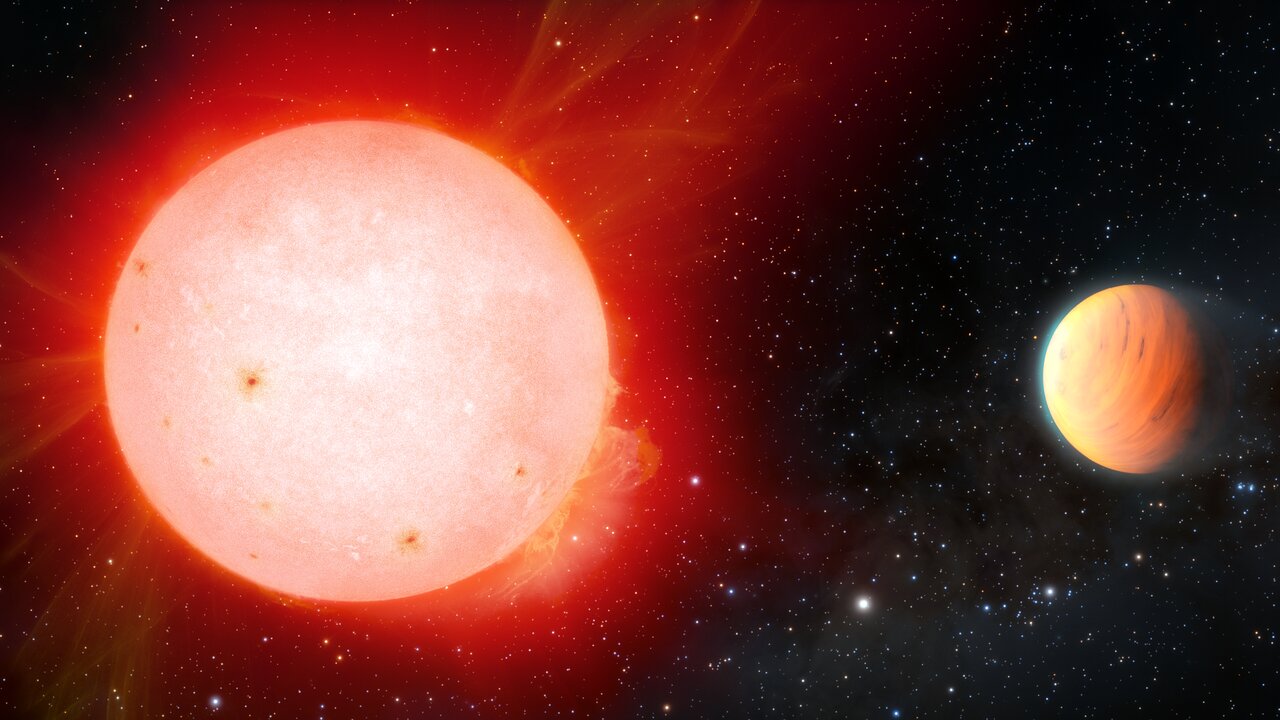Exoplanet discovery space hosts all kinds of interesting “super” worlds. There are super-Earths, super-Neptunes, and, of course, Super-Jupiters. Recently, the WIYN telescope on Kitt Peak in Arizona did a follow-up observation of a gas giant discovered by TESS (the Transiting Exoplanet Survey Satellite). The world is fluffy and weird and it’s orbiting a red giant star. Oddly enough, it shouldn’t even exist. Yet, there it is happily orbiting a star some 580 light-years from Earth.
The gas giant planet in question is called TOI-3757 b. Based on measurements by WIYN and TESS, as well as other telescopes, TOI-3757 b’s average density turns out to be 0.27 grams per cubic centimeter. This makes it less than half the density of Saturn and roughly one-quarter the density of water. That’s about the density of a marshmallow. Such a puffy characteristic is hard to believe, especially since the star it orbits isn’t exactly the best place to host gas giants.
“Giant planets around red dwarf stars have traditionally been thought to be hard to form,” says Shubham Kanodia, a researcher at Carnegie Institution for Science’s Earth and Planets Laboratory and first author on a paper published in The Astronomical Journal about TOI-3757 b. “So far this has only been looked at with small samples from Doppler surveys, which typically have found giant planets further away from these red dwarf stars. Until now we have not had a large enough sample of planets to find close-in gas planets in a robust manner.”
How a Red Dwarf Threatens a Gas Giant
Why are red dwarf star systems not-so-optimal habitats for fluffy giant planets? They’re certainly cooler than their brighter, larger counterparts in the star family. You’d think that would make them a bit more welcoming to gas giants. But, these little stars can be active, too. Astronomers see them emitting powerful flares from time to time, which can destroy a planet’s atmosphere. So, how did TOI-3757 b get there? The research team has a few ideas to explain that puzzle.
It’s possible the extra-low density of TOI-3757 b could date back to the formation of its interior. Typically, gas giants are born with rocky cores that can be up to about ten times the mass of Earth. Their gravity attracts huge amounts of gas from the protoplanetary nebula. That’s how you get Jupiters and Saturns (for example). It’s likely this didn’t happen with TOI-3757 b. Its red dwarf star isn’t very rich in heavy elements compared to other M-dwarfs with gas giants. That’s an important clue. It means the planet’s rocky core formed more slowly. That’s because it took longer to gather enough rocky materials from the nebula. If that’s true, then the planet didn’t accrete quite as much gas during its formation, which affected the planet’s total density.
There’s a second clue that might explain the marshmallow planet. Its elliptical orbit takes it closer to the star at certain times. That heats the atmosphere more than normal and causes it to puff up.
Delving into the Marshmallow
Of course, there’s a lot more to find out about this planet and astronomers are anxious to study it in more detail. “Potential future observations of the atmosphere of this planet using NASA’s new James Webb Space Telescope could help shed light on its puffy nature,” said Jessica Libby-Roberts, a postdoctoral researcher at Pennsylvania State University.
This is particularly true since finding even one such planet around a red dwarf means there are probably more of them out there. In the grand scheme of exoplanet studies, understanding a puffy Jupiter orbiting an active cool star will give astronomers more insight into how planets form around many different kinds of stars.
For More Information
‘Marshmallow’ World Orbiting a Cool Red Dwarf Star
TOI-3757 b: A Low-density Gas Giant Orbiting a Solar-metallicity M Dwarf

